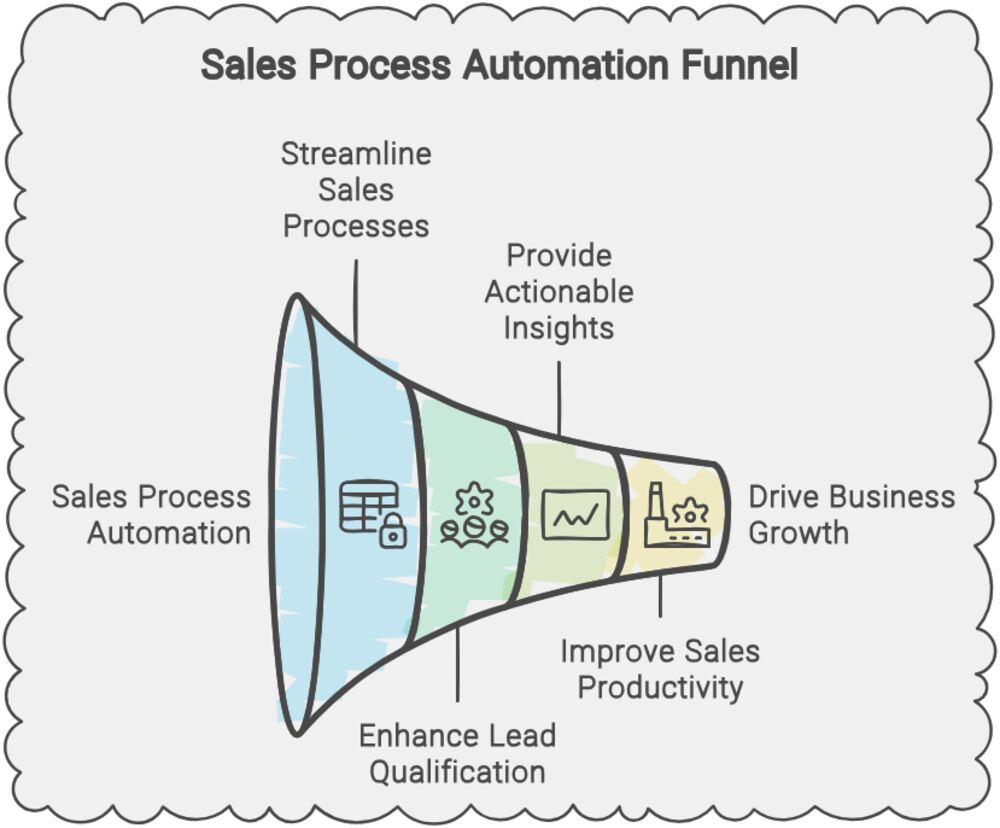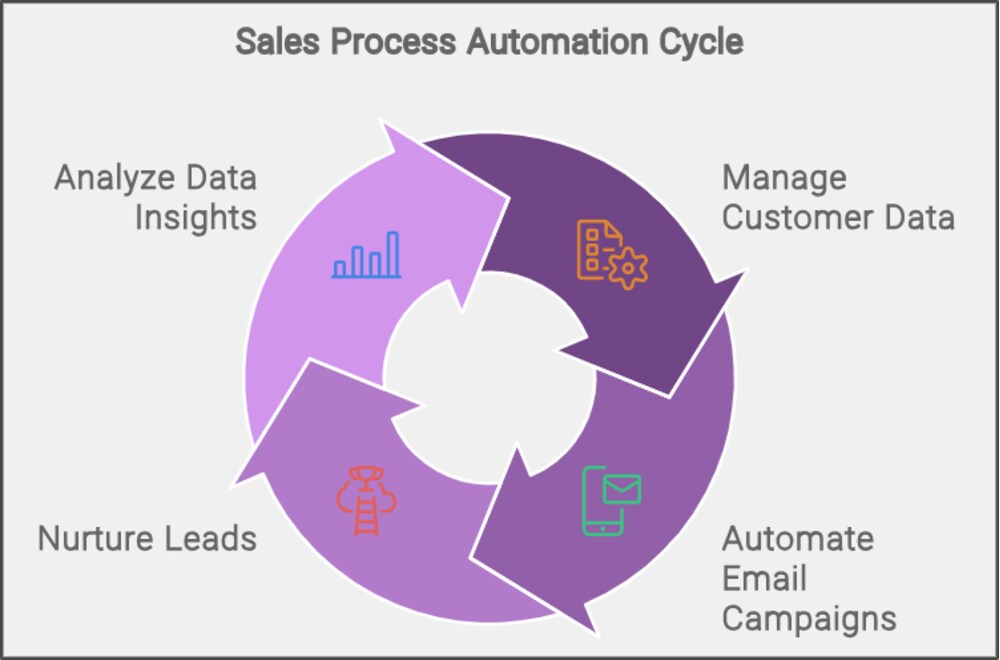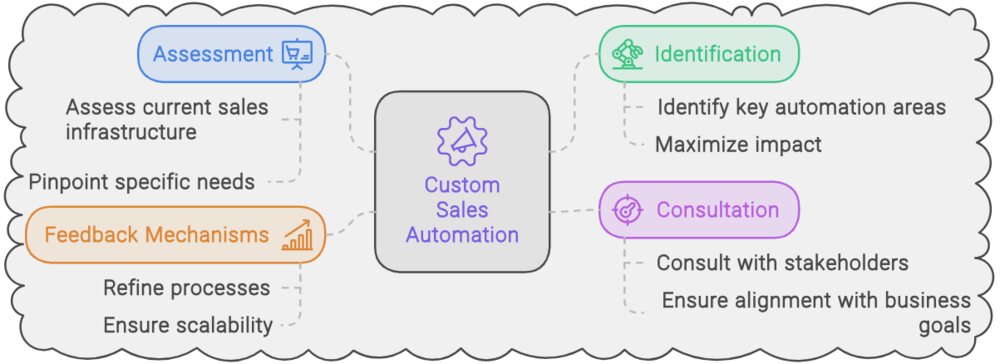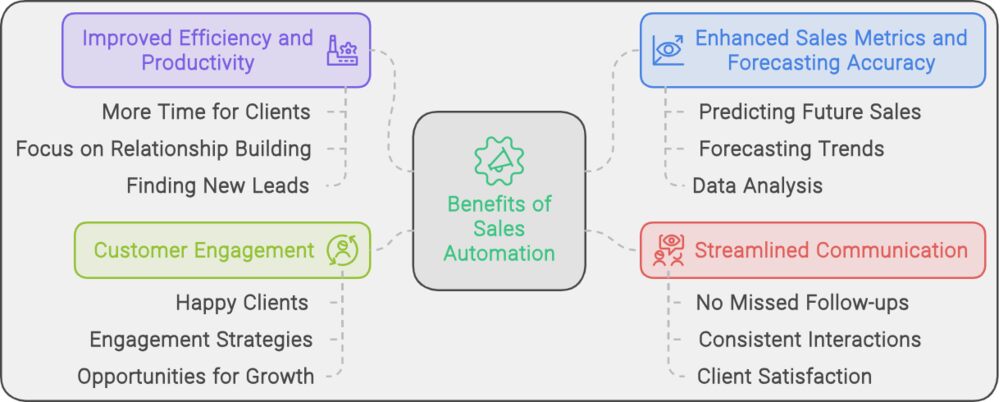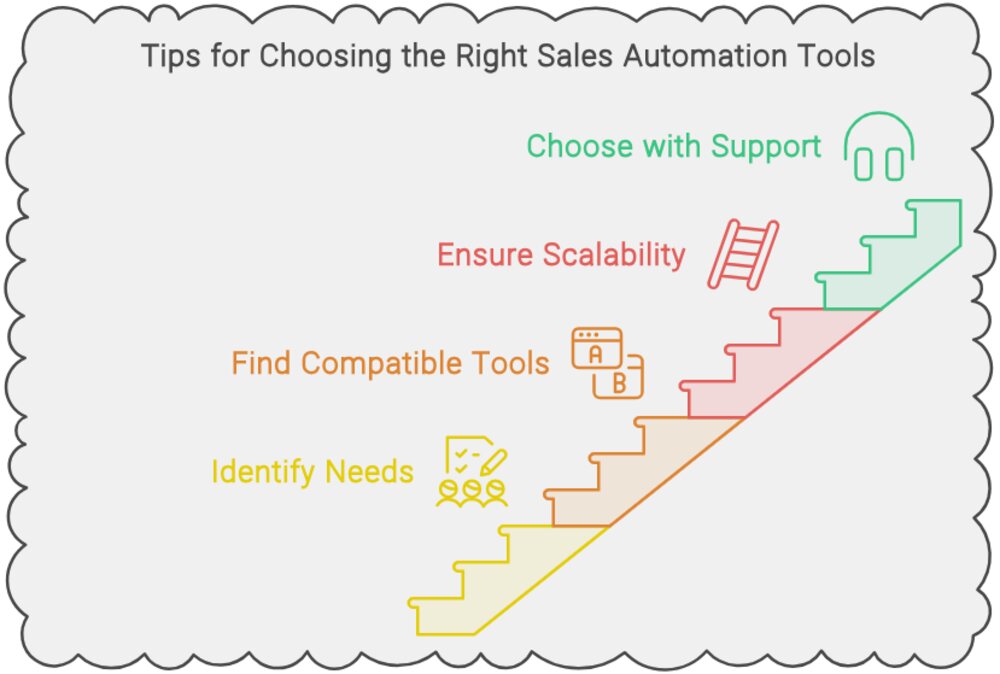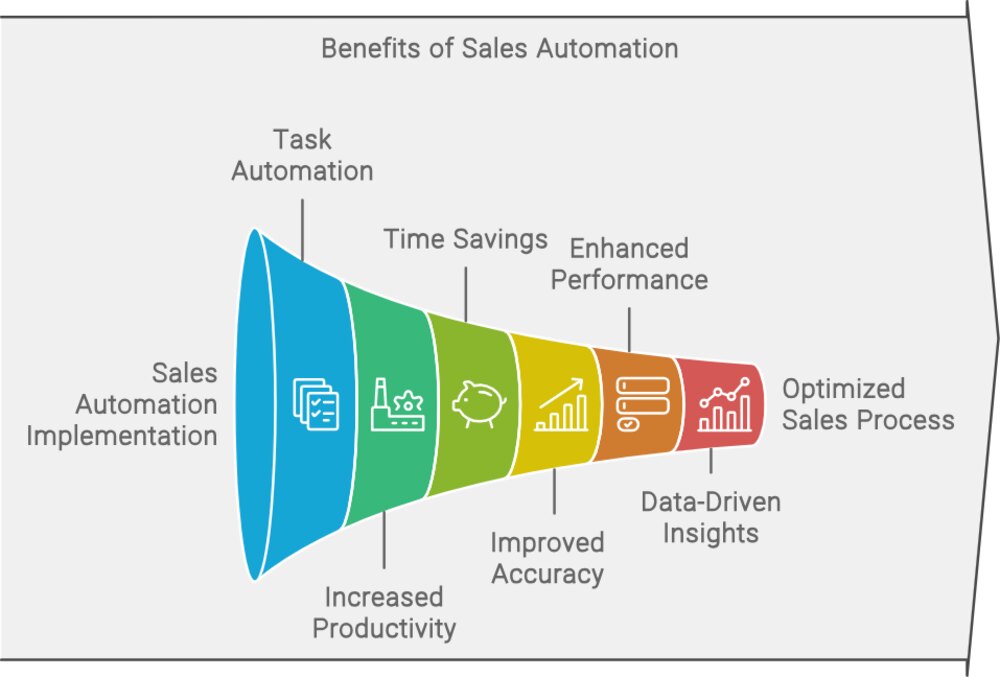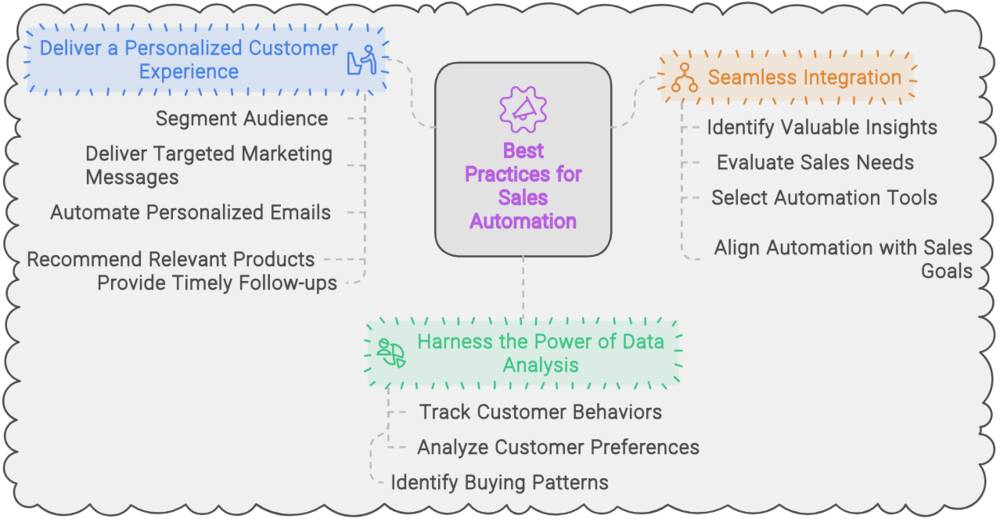Marketing and sales automation is a powerful strategy that businesses can use to streamline their marketing and sales processes. By harnessing the capabilities of automation technology, organizations can enhance their efficiency, improve customer targeting, and drive revenue growth.
Concept of Marketing and Sales Automation
Marketing and sales automation involves using software and technology to automate repetitive tasks, streamline workflows, and optimize marketing and sales efforts. This includes automating tasks such as lead generation, lead nurturing, customer segmentation, email marketing, and more. By automating these processes, businesses can save time, reduce manual errors, and focus their efforts on high-value activities.
Benefits of Marketing and Sales Automation
Implementing marketing and sales automation can bring numerous benefits to businesses. Firstly, automation allows for more efficient lead management, ensuring that leads are nurtured and engaged throughout the buyer’s journey. This can result in higher conversion rates and increased revenue.
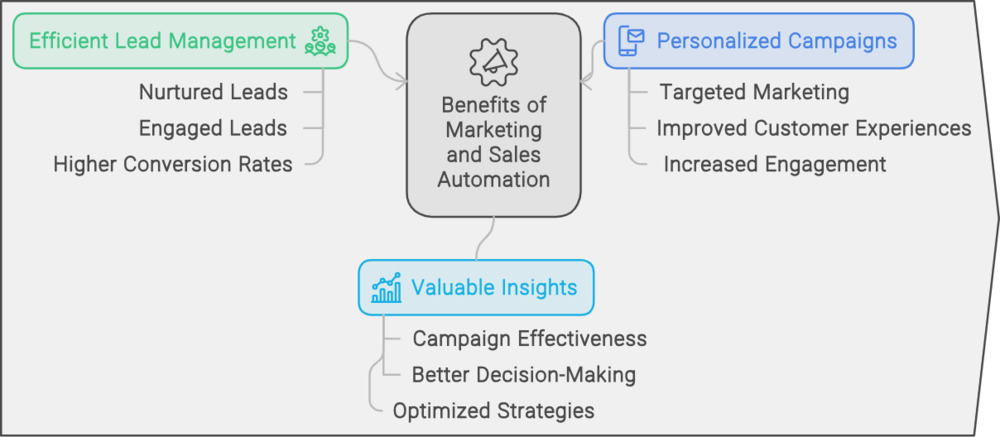
Furthermore, automation enables personalized and targeted marketing campaigns, allowing businesses to deliver the right message to the right audience at the right time. This leads to improved customer experiences, increased engagement, and ultimately, higher sales.
Marketing and sales automation also provides valuable insights and analytics, allowing businesses to track and measure the effectiveness of their campaigns. This data-driven approach enables better decision-making and helps businesses optimize their marketing strategies for maximum ROI.
Key Considerations for Implementing Marketing and Sales Automation
While the benefits of marketing and sales automation are clear, businesses need to approach implementation strategically. Considerations such as selecting the right automation software, aligning sales and marketing teams, and providing sufficient training are crucial for success.
An integrated approach ensures that marketing and sales teams work together towards a common goal. This alignment helps develop a unified strategy, enabling seamless collaboration and efficient workflows.
Incorporating Marketing and Sales Automation in Your Business
Integrating marketing and sales automation into your business processes can propel your organization forward, increasing efficiency, productivity, and revenue. Whether you are a small business or an enterprise-level company, understanding the concept of marketing and sales automation is the first step towards unlocking its potential.
Key Benefits of Marketing and Sales Automation
Implementing marketing and sales automation can benefit businesses, revolutionizing their operations and contributing to their overall success. Let’s explore some of the key advantages:
- Improved Efficiency: Marketing and sales automation streamlines repetitive tasks, allowing teams to focus their time and energy on high-value activities. Businesses can significantly increase their efficiency by automating processes such as lead qualification, email campaigns, and data analysis.
- Increased Productivity: With automation handling time-consuming tasks, marketing and sales teams can operate at peak performance. By automating lead generation, nurturing, and follow-ups, teams can engage with prospects more effectively and close deals faster.
- Better Lead Management: Marketing and sales automation platforms enable businesses to effectively capture, organize, and manage leads throughout the sales funnel. By automating lead scoring, routing, and nurturing, companies can ensure that leads are properly qualified and efficiently moved through the sales pipeline.
Choosing the Right Marketing and Sales Automation Software
When it comes to implementing marketing and sales automation, choosing the right software is crucial for the success of your business. With a wide range of options available in the market, it can be overwhelming to make the best decision. However, by considering a few key factors, you can confidently select a software solution that aligns with your business needs and goals.
Features
One of the first things to consider when evaluating marketing and sales automation software is the range of features it offers. Determine which features are essential for your business, such as lead generation, email marketing, customer segmentation, or social media integration. Look for software that provides a comprehensive suite of tools that meet your specific marketing and sales requirements.
Scalability
As your business grows, your marketing and sales automation needs will evolve. It’s important to choose a software solution that can scale alongside your business and accommodate increasing data volumes, user accounts, and campaign complexity. This ensures that your investment is future-proof and allows for seamless expansion without the need for costly migrations or system replacements.
Integration Capabilities
Integrating your marketing and sales automation software with existing systems is essential for smooth operations and data synchronization. Consider whether the software easily integrates with your customer relationship management (CRM) system, email marketing platform, analytics tools, or other relevant applications. The ability to connect different software solutions enhances data visibility, streamlines workflows, and improves overall efficiency.
User-Friendliness
An intuitive and user-friendly interface is crucial for maximizing user adoption and minimizing training time. Look for software that offers a clean and intuitive interface, allowing your team to easily navigate and utilize its features. The software should have a logical workflow, clear documentation, and provide comprehensive training and support resources to ensure a seamless onboarding experience for your team.
Data Security
When dealing with sensitive customer and business data, it’s essential to prioritize data security. Ensure that the marketing and sales automation software you choose provides robust security measures, including encrypted data transmission, role-based access controls, and data backup and recovery options. Verify that the software complies with industry standards and regulations to protect your data from unauthorized access and potential breaches.
Implementing Marketing and Sales Automation: Best Practices
Successfully implementing marketing and sales automation requires a well-defined strategy and careful execution. By following these best practices, businesses can maximize the benefits of automation and drive growth.
1. Set Clear Goals
Before implementing marketing and sales automation, it is crucial to define clear goals and objectives. These goals should align with the overall business strategy and should be measurable. Whether it’s increasing lead generation, improving conversion rates, or enhancing customer retention, having specific goals will guide your automation efforts.
2. Align Sales and Marketing Teams
One of the key challenges in implementing marketing and sales automation is ensuring alignment between the sales and marketing teams. Establishing open communication channels and fostering collaboration between these departments is essential for the success of automation initiatives. By working together, the two teams can create cohesive strategies and streamline processes.
3. Provide Adequate Training
When introducing new automation tools and technologies, it is essential to provide comprehensive training to the employees who will be using them. This training should cover not only the technical aspects of the tools but also their strategic application. By ensuring that all team members are well-equipped and knowledgeable, businesses can overcome resistance to change and maximize the benefits of automation.
4. Start Small and Scale Gradually
Implementing marketing and sales automation can be a complex process. To prevent overwhelming your team and ensure a smooth transition, it is advisable to start with a pilot project or a small-scale implementation. This allows you to identify challenges, test different strategies, and refine your automation processes before scaling up across the organization.
5. Regularly Review and Optimize
Automation is not a one-time setup but an ongoing process. Continuously reviewing and optimizing your marketing and sales automation workflows is essential to ensure their effectiveness. Regularly analyze key performance indicators, identify areas for improvement, and make data-driven adjustments to maximize results.
6. Seek Expert Guidance
Implementing marketing and sales automation can be complex, especially for businesses without prior experience. It is beneficial to seek guidance from automation experts or consultants who can provide valuable insights and help tailor automation strategies to your business’s unique needs.
7. Stay Updated with Industry Trends
The automation landscape is constantly evolving, with new tools, technologies, and trends emerging regularly. To stay ahead of the competition, it is essential to stay updated with the latest industry developments. Regularly monitor industry publications, attend conferences, and engage in networking opportunities to gain insights and discover new opportunities for automation.
Integrating Marketing and Sales: A Collaborative Approach
A collaborative approach to integrating marketing and sales entails breaking down silos and fostering open communication between the teams. This ensures a seamless flow of information, fosters collaboration, and enables both departments to work towards a common goal.
One of the key benefits of a collaborative approach is the ability to create a cohesive customer journey. When marketing and sales teams work together, they can develop unified strategies that seamlessly guide prospects through the sales funnel, from initial awareness to final purchase.
Furthermore, an integrated marketing and sales approach allows for more accurate tracking and measurement of campaigns. By sharing data and insights, both departments can gain a comprehensive understanding of customer behaviors and preferences, enabling them to create personalized and tailored experiences.
Establishing a collaborative culture between marketing and sales involves clear communication, shared goals, and mutual respect. Regular meetings, joint planning sessions, and collaborative brainstorming can foster a sense of unity and ensure that both teams are working towards common objectives.
Creating Effective Lead Management Processes
Successful lead management processes are essential for businesses to optimize lead conversion and maximize revenue within the marketing and sales automation framework. By efficiently managing leads, companies can nurture potential customers and guide them through the sales cycle, increasing the chances of conversion. To develop an effective lead management strategy, businesses should consider the following:
1. Lead Scoring and Qualification
Implementing lead scoring and qualification methodologies helps prioritize leads based on their level of interest and readiness to purchase. By assigning numerical values to specific lead characteristics, businesses can identify hot leads that are highly likely to convert and allocate appropriate resources for targeting them.
2. Lead Segmentation
Segmenting leads based on demographics, behavior, or other relevant criteria allows businesses to tailor their marketing and sales efforts to specific customer groups. By delivering targeted messages and offers that resonate with each segment, companies can enhance engagement and drive higher conversion rates.
3. Lead Nurturing
Nurturing leads involves building relationships and consistently engaging with them through personalized communications. Automated workflows and personalized content allow businesses to deliver relevant information to leads at various stages of the buying process, guiding them toward a purchase decision.
4. Lead Tracking and Attribution
Tracking leads throughout the sales cycle provides valuable insights into their behavior, preferences, and interactions with marketing and sales touchpoints. Businesses can leverage this data to understand which strategies and channels are driving the most successful conversions, enabling continuous optimization and improvement.
By implementing these lead management processes, businesses can streamline their sales and marketing efforts, improve the efficiency of lead conversion, and ultimately drive revenue growth.
Utilizing Customer Relationship Management (CRM) Systems
Customer Relationship Management (CRM) systems play a pivotal role in the realm of marketing and sales automation. These powerful tools enable businesses to effectively manage customer interactions, track sales activities, and enhance customer retention.
CRM systems provide a centralized platform where businesses can store and access crucial customer data, including contact information, purchase history, and communication preferences. By leveraging this information, businesses can personalize their marketing efforts and deliver targeted messages that resonate with customers.
One of the key capabilities of CRM systems is the ability to streamline sales processes. By capturing comprehensive details about leads and prospects, sales teams can efficiently track and nurture opportunities at each stage of the sales pipeline. This enables businesses to close deals faster and increase revenue.
CRM systems facilitate better collaboration between marketing and sales teams. By sharing real-time data and insights, these systems bridge the gap between departments and align efforts toward achieving common goals. This collaborative approach leads to improved lead management, increased customer satisfaction, and enhanced customer experiences.
Personalization and Targeted Marketing Campaigns
Personalization has become a crucial component of successful marketing and sales automation strategies. By tailoring marketing campaigns to individual customers’ preferences and needs, businesses can foster stronger connections, drive engagement, and ultimately increase sales.
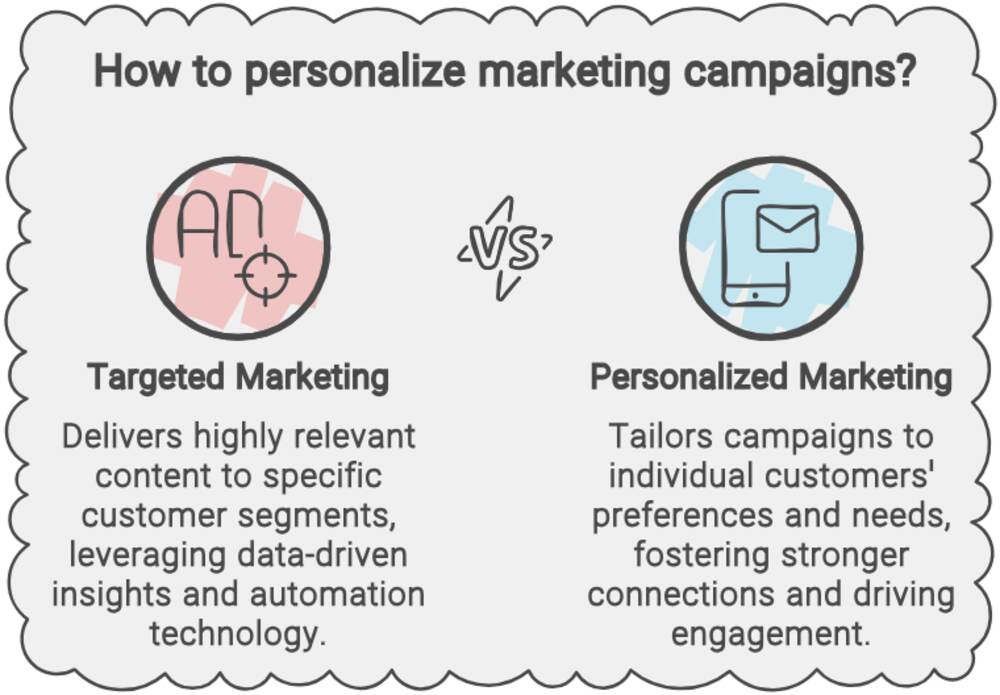
Targeted marketing campaigns leverage data-driven insights and automation technology to deliver highly relevant content to specific customer segments. This approach enables businesses to create personalized experiences that resonate with customers on a deeper level, resulting in improved customer satisfaction and loyalty.
When implementing targeted marketing campaigns, it’s important to gather and analyze customer data to understand their preferences, behavior, and demographics. This information can be obtained from various sources such as social media, customer surveys, website analytics, and past purchasing history. With valuable data at hand, businesses can segment their customer base and design campaigns that are tailored to each segment’s unique characteristics.
Personalization in targeted marketing campaigns extends beyond simple greetings or product recommendations. It involves crafting compelling messages that speak directly to customers’ pain points, desires, and aspirations. By showing customers that their individual needs matter, businesses can establish a deeper emotional connection, leading to higher engagement and conversion rates.
Integrating Marketing Analytics for Data-Driven Decisions
Integrating marketing analytics into your automation framework is crucial for making data-driven decisions that can optimize your marketing strategies and drive business growth. By harnessing the power of data and analytics, businesses can gain valuable insights into their customer behavior, campaign performance, and overall marketing effectiveness. These insights enable marketers to identify patterns, trends, and opportunities, guiding them in making informed decisions to improve marketing outcomes.
When integrating marketing analytics into your automation framework, it’s essential to collect and analyze relevant data from various sources, such as website traffic, social media engagement, email campaign performance, and customer demographics. By consolidating this data, marketers can gain a holistic view of their marketing efforts and make strategic adjustments to optimize their campaigns.
Key Benefits of Integrating Marketing Analytics:
- Improved targeting and personalization: By understanding customer preferences and behavior through data analysis, marketers can tailor their campaigns to target specific customer segments more effectively, leading to higher engagement and conversion rates.
- Enhanced campaign performance: By analyzing data on campaign performance, marketers can identify underperforming areas and make data-driven optimizations to improve overall campaign effectiveness.
- Efficient budget allocation: Marketing analytics provides insights into the return on investment (ROI) of various marketing channels and campaigns, allowing businesses to allocate their budgets efficiently and invest in strategies that yield the highest returns.
- Real-time insights: With real-time analytics, marketers can monitor campaign performance in real-time, enabling them to make immediate adjustments and optimize their marketing efforts while campaigns are still live.
Streamlining Sales Processes with Automation
Automation has revolutionized the way businesses operate, and sales processes are no exception. By incorporating automation tools and strategies, companies can streamline their sales processes to drive efficiency and generate higher revenues. Let’s explore how automation can optimize various aspects of the sales journey.
1. Lead Nurturing
Effective lead nurturing is crucial for converting potential customers into loyal buyers. Automation allows businesses to deliver personalized and timely content to prospects, nurturing them through each stage of the buyer’s journey. By automating lead nurturing workflows, companies can provide relevant information, address pain points, and engage prospects at the right moment, ultimately increasing the likelihood of conversion.
2. Prospecting
Prospecting involves identifying and qualifying leads. With automation, sales teams can automate repetitive manual tasks such as lead data collection, segmentation, and follow-ups. By leveraging automation tools, businesses can gather valuable data, target the right prospects, and nurture them systematically, enhancing the efficiency and effectiveness of the prospecting process.
3. Closing Deals
The final stage of the sales process is closing deals. Automation can play a significant role in streamlining this crucial step. By automating contract generation, digital signature collection, and payment processing, companies can expedite the closing process, reducing friction and increasing conversion rates. Automation also enables sales teams to stay organized, track progress, and focus on building relationships with prospects, ultimately leading to more successful deal closures.
Automating Email Marketing for Effective Communication
Email marketing remains a powerful tool for businesses to communicate with their prospects and customers. By automating email campaigns, businesses can streamline their communication processes and deliver targeted messages at the right time, resulting in more effective engagement and higher conversion rates.
Automating email marketing allows businesses to send personalized and relevant content to their audience based on their preferences, behaviors, and demographics. By segmenting the email list and creating tailored campaigns, businesses can ensure that their messages resonate with recipients, increasing the chances of capturing their attention and driving action.
When automating email marketing, businesses can implement various strategies to enhance communication and deliver value to their audience. One such strategy is creating a welcome series for new subscribers, which introduces them to the brand, builds trust, and encourages them to take further action.
According to research, welcome emails have an open rate 4 times higher than regular emails, making them a great opportunity to make a strong first impression and establish a relationship with potential customers.
Another effective strategy is implementing triggered emails based on specific customer actions, such as abandoned cart emails or follow-up emails after a purchase. These automated emails aim to re-engage customers, remind them of their interests, and prompt them to complete their desired actions.
Benefits of Automating Email Marketing
Automating email marketing brings several benefits to businesses:
- Increased efficiency: By automating repetitive tasks such as sending welcome emails or order confirmations, businesses can save time and resources while ensuring consistent and timely communication.
- Improved targeting: Automation allows businesses to segment their audience based on various criteria, enabling them to send highly targeted and personalized emails that resonate with recipients.
- Better engagement: Personalized and relevant emails are more likely to grab the attention of recipients and encourage them to take action, resulting in higher engagement rates.
- Enhanced customer loyalty: Automated emails enable businesses to nurture customer relationships by delivering valuable content, special offers, and personalized recommendations, fostering loyalty and repeat purchases.
With the right email marketing automation platform, businesses can unlock these benefits and optimize their communication efforts for better results.
Incorporating Social Media in Marketing and Sales Automation
As businesses continue to embrace marketing and sales automation to streamline their processes and improve efficiency, the integration of social media platforms has become increasingly essential. Leveraging the power of social media in conjunction with marketing and sales automation allows companies to enhance lead generation, boost customer engagement, and increase brand awareness.
Social media offers a wide range of benefits for businesses incorporating it into their marketing and sales automation strategies. By utilizing social media platforms such as Facebook, Twitter, and LinkedIn, companies can expand their reach and target specific demographics with tailored content. Social media provides a unique opportunity to engage with potential customers, build relationships, and establish brand loyalty.
When integrated with marketing and sales automation systems, social media becomes a valuable source of lead generation. By leveraging analytics, businesses can identify potential customers based on their social media activity, interests, and interactions. This data allows companies to personalize their marketing campaigns, ensuring that they are targeting the right audience with relevant content.
Key advantages of incorporating social media in marketing and sales automation:
- Increased brand visibility: Social media allows businesses to showcase their brand and connect with a wider audience, improving brand recognition and visibility.
- Enhanced customer engagement: By actively participating in social media conversations, businesses can foster meaningful interactions with customers, strengthening relationships and building customer loyalty.
- A targeted approach: Social media platforms provide advanced targeting options, enabling businesses to reach specific demographics and deliver personalized messages to their ideal customers.
- Improved lead generation: By analyzing social media data, businesses can identify potential leads, track their interests and behaviors, and nurture them through the sales funnel.
- Real-time customer feedback: Social media platforms offer instantaneous feedback from customers, giving businesses valuable insights for continuous improvement and innovation.
Incorporating social media into marketing and sales automation requires a strategic approach.
The Role of Artificial Intelligence in Marketing and Sales Automation
Artificial intelligence (AI) is playing an increasingly significant role in revolutionizing marketing and sales automation, enabling businesses to enhance their strategies and drive sustainable growth. By leveraging AI-powered tools and technologies, organizations can achieve greater personalization, predictive analytics, and actionable customer insights.
1. Personalization:
AI enables businesses to deliver highly personalized marketing and sales experiences to their customers. Through machine learning algorithms, AI can analyze vast amounts of customer data and behavior, allowing companies to tailor their messaging, offers, and recommendations to individual preferences, increasing engagement and conversion rates.
2. Predictive Analytics:
Using AI, marketing and sales teams can leverage predictive analytics to forecast customer behavior, identify trends, and make data-driven decisions. By analyzing historical data and patterns, AI algorithms can help businesses optimize their marketing campaigns, identify the most valuable leads, and prioritize sales opportunities.
3. Customer Insights:
AI-powered tools can extract valuable insights from large volumes of customer data, enabling businesses to gain a deeper understanding of their target audience. By analyzing customer interactions, preferences, and feedback, AI can provide actionable insights that help optimize marketing strategies, improve customer experiences, and drive customer loyalty and retention.
Conclusion
Integrating marketing and sales automation has become crucial for organizations aiming for sustainable growth and success. By implementing marketing and sales automation, businesses can streamline their processes, improve efficiency, and enhance lead management. The collaborative approach between marketing and sales departments allows for better customer engagement and higher conversion rates.
Additionally, utilizing customer relationship management systems, personalizing marketing campaigns, integrating marketing analytics, and automating sales processes further optimize the effectiveness of this unified approach. Leveraging artificial intelligence and measuring the effectiveness of automation efforts also play vital roles in driving data-driven decision-making and calculating return on investment.










